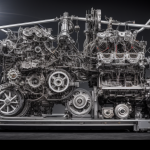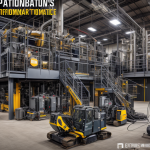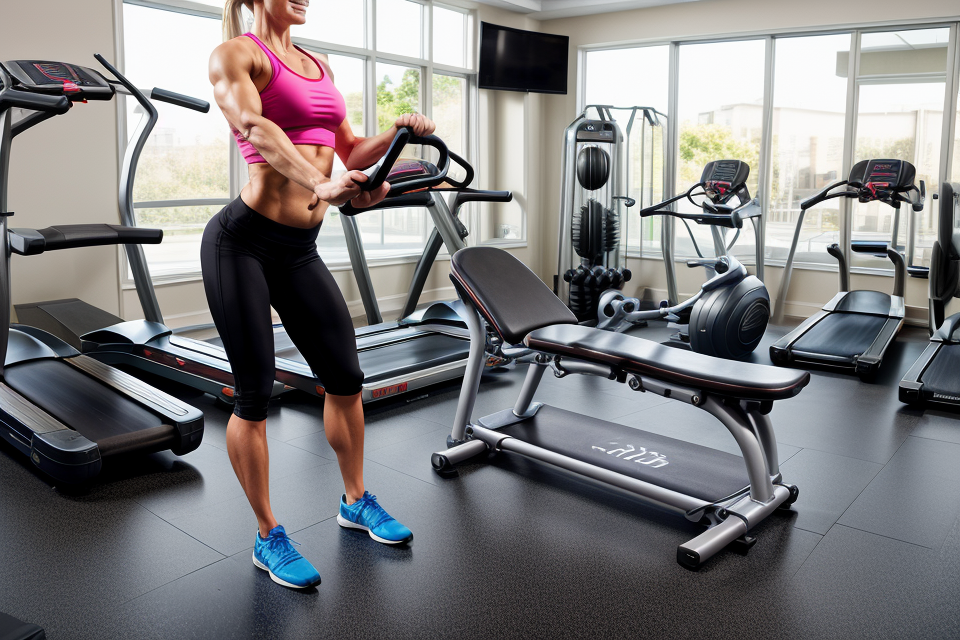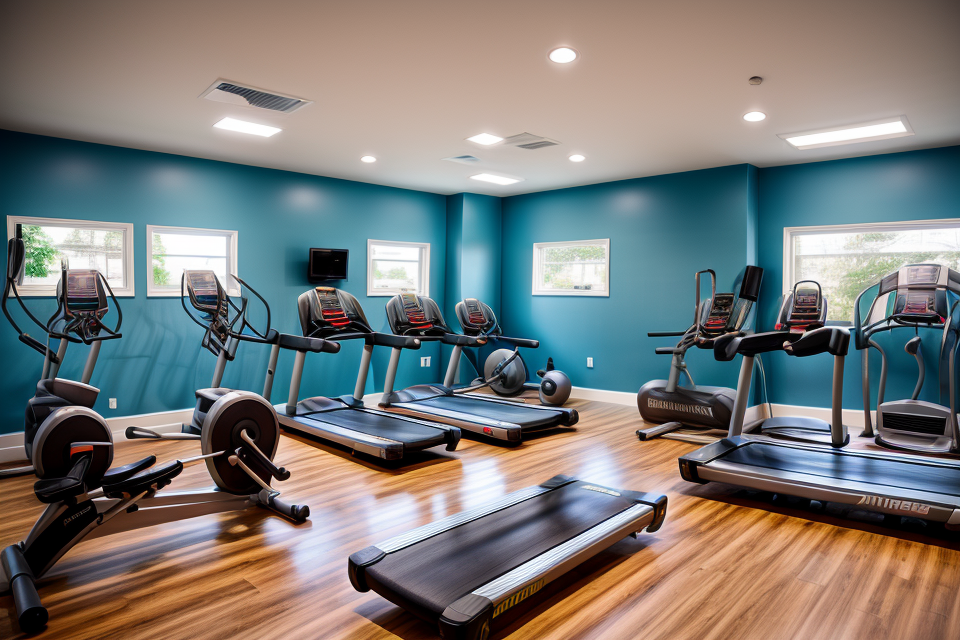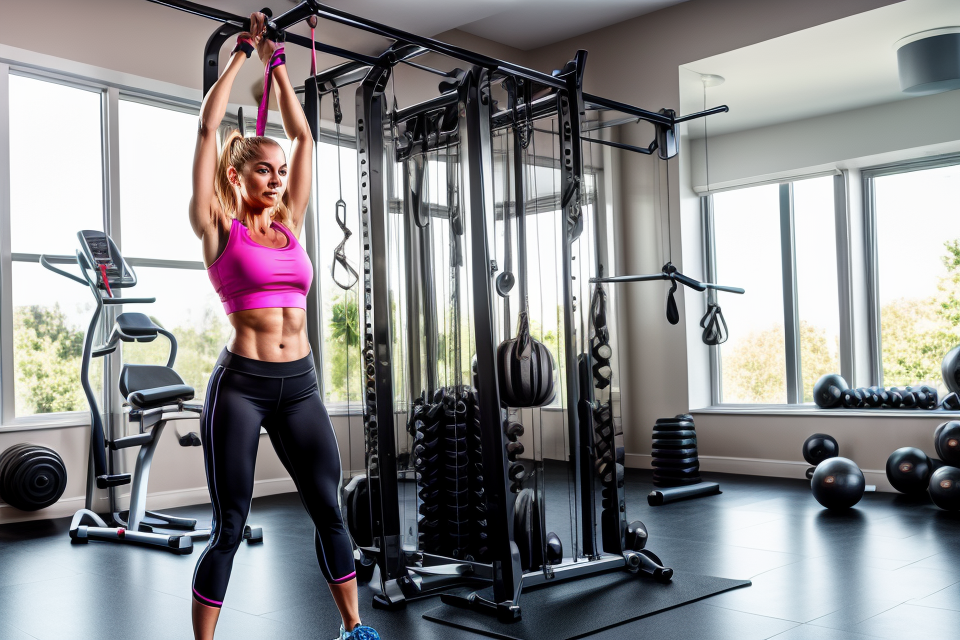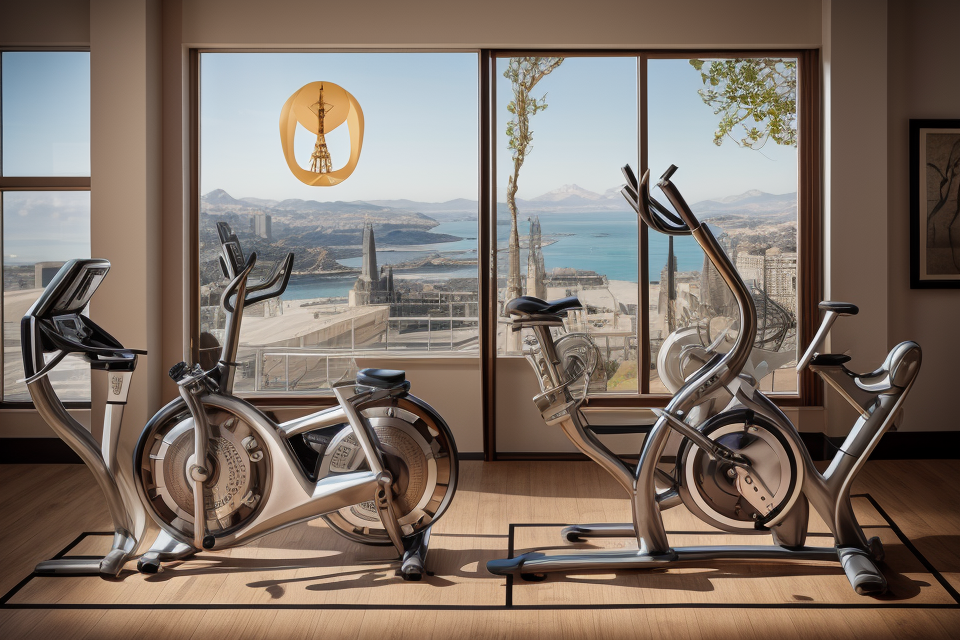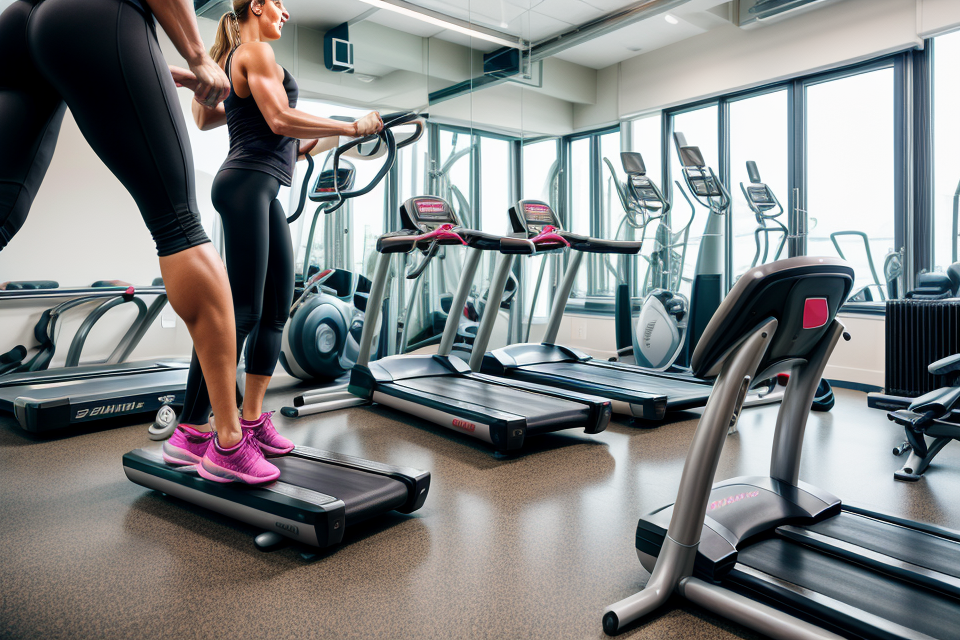When it comes to exercise, there are a lot of different approaches you can take. Some people prefer to hit the gym and use equipment like treadmills, ellipticals, and weight machines. Others prefer to exercise outdoors, using the great outdoors as their gym. But which approach is better? In this guide, we’ll take a look at the pros and cons of exercising with equipment, and help you decide what’s right for you. Whether you’re a seasoned gym-goer or just starting out on your fitness journey, this guide has something for everyone. So let’s get started!
The Benefits of Using Fitness Equipment
Fitness equipment can offer numerous benefits when it comes to exercising. From improving your overall health to helping you achieve your fitness goals, using equipment can provide a variety of advantages.
Improved Health
One of the most significant benefits of using fitness equipment is improved health. Regular exercise with equipment can help to reduce the risk of developing chronic diseases such as heart disease, diabetes, and certain types of cancer. Additionally, using equipment can help to improve cardiovascular health, increase muscle strength and endurance, and enhance overall physical fitness.
Customized Workouts
Fitness equipment allows for customized workouts based on your specific fitness goals. Whether you are looking to lose weight, build muscle, or improve your overall health, there is a piece of equipment that can help you achieve your goals. Many gyms offer a variety of equipment, from treadmills and ellipticals to weight machines and resistance bands, making it easy to tailor your workout to your specific needs.
Convenience
Another benefit of using fitness equipment is convenience. Gyms and fitness centers offer a variety of equipment that is easy to use and accessible to people of all fitness levels. Additionally, many people choose to exercise at home using equipment such as resistance bands or medicine balls, which can be easily stored and transported. This makes it easy to fit exercise into your busy schedule, even if you don’t have a lot of time to spare.
Increased Motivation
Finally, using fitness equipment can help to increase motivation and commitment to exercise. When you have access to a variety of equipment, it can be easier to find exercises that you enjoy and that keep you engaged. Additionally, having access to equipment can help to create a sense of accountability, as you are more likely to stick to your workout routine when you have invested in equipment.
Overall, using fitness equipment can offer a variety of benefits, from improved health to increased motivation. Whether you choose to exercise at home or at a gym, there are many options available to help you achieve your fitness goals.
Improved Efficiency
One of the main advantages of using fitness equipment during exercise is improved efficiency. Here are some of the ways in which using equipment can lead to more efficient workouts:
- Enhanced Muscle Engagement: Fitness equipment is designed to target specific muscle groups, which can lead to more effective muscle engagement during exercise. This can result in faster progress towards fitness goals, as well as greater muscle development and strength gains.
- Greater Variety of Exercises: Using fitness equipment allows for a greater variety of exercises, which can help to prevent boredom and keep workouts interesting. This can also help to ensure that all muscle groups are being targeted, leading to a more well-rounded workout.
- Targeted Muscle Group Training: As mentioned above, fitness equipment is designed to target specific muscle groups. This can lead to more efficient training of these muscles, as well as greater progress towards fitness goals. Additionally, targeted muscle group training can help to reduce the risk of injury, as it allows for more precise and controlled movements.
Reduced Risk of Injury
When it comes to exercising with equipment, one of the most significant benefits is the reduced risk of injury. There are several reasons why using fitness equipment can help prevent injuries, which include:
- Proper Alignment and Form: Fitness equipment is designed to help you maintain proper alignment and form while exercising. This is particularly important when it comes to weightlifting and other strength training exercises, where poor form can lead to injury. Using equipment such as weight benches, squat racks, and exercise machines can help ensure that you are performing exercises correctly, which can help prevent injuries.
- Support for Weak or Injured Joints: If you have weak or injured joints, using fitness equipment can provide support and stability that may not be possible with bodyweight exercises alone. For example, if you have a knee injury, using a stationary bike or elliptical machine can help you get a cardio workout without putting excessive strain on your knee joint. Similarly, using equipment such as resistance bands or weights can help you build strength without exacerbating your injury.
- Stabilization of Unstable Joints: Even if you don’t have a pre-existing injury, using fitness equipment can help stabilize unstable joints and prevent injuries from occurring. For example, using a balance board or Bosu ball can help improve balance and stability in your ankles, which can help prevent ankle sprains or other injuries. Similarly, using equipment such as resistance bands or TRX straps can help stabilize your core and prevent lower back injuries.
Overall, using fitness equipment can help reduce the risk of injury by providing support, stability, and proper alignment and form. By using equipment that is designed to help you exercise safely and effectively, you can minimize the risk of injury while still achieving your fitness goals.
Time-Efficient Workouts
- Maximized Results in Minimal Time
- Fitness equipment allows for targeted exercises that can effectively work multiple muscle groups at once, resulting in a more efficient workout.
- This means that you can achieve a full-body workout in less time, maximizing your results while minimizing your gym time.
- Reduced Downtime Between Sets
- Using fitness equipment also reduces the downtime between sets, allowing you to work out more effectively and efficiently.
- With traditional free weights, there is often a need to take breaks between sets to rest and recover, which can slow down your workout.
- With fitness equipment, you can move quickly from one exercise to the next, without needing to take as much rest time.
- Customizable Workout Plans
- Fitness equipment allows for customizable workout plans, making it easier to target specific muscle groups or workout areas.
- You can adjust the resistance levels on machines, change the angle of a bench press, or use different attachments on a power rack to create a more personalized workout experience.
- This allows you to create a workout plan that is tailored to your specific goals and needs, ensuring that you get the most out of your workout.
The Drawbacks of Using Fitness Equipment
While exercising with equipment has numerous benefits, there are also several drawbacks to consider. In this section, we will discuss some of the potential downsides of using fitness equipment during your workout.
- Lack of Variety: One of the main drawbacks of using fitness equipment is the lack of variety in your workout routine. When you use the same equipment repeatedly, your body may become accustomed to the movements and the workout may become less effective. Additionally, you may miss out on the full range of motion that can be achieved through bodyweight exercises or other forms of exercise.
- Risk of Injury: Another potential drawback of using fitness equipment is the risk of injury. Improper use of equipment can lead to strains, sprains, and other injuries. Additionally, if you are new to using certain equipment, you may be at a higher risk of injury until you become more familiar with the proper form and technique.
- Cost: Fitness equipment can be expensive, especially for those who are just starting out on their fitness journey. Additionally, maintaining and repairing equipment can also add to the cost. For those on a tight budget, this may be a significant drawback.
- Limited Exercise Options: While there are many different types of fitness equipment available, not all types of exercise can be performed using equipment. Some exercises, such as yoga or Pilates, require no equipment and can be done anywhere. For those who prefer to exercise at home or while traveling, relying solely on fitness equipment may not be feasible.
- Time Constraints: Finally, using fitness equipment can be time-consuming. Setting up and disassembling equipment can take time, and if you are working out at home, you may need to find space for the equipment between workouts. Additionally, if you are using a gym, you may need to factor in travel time to and from the gym.
Cost and Space Requirements
When it comes to exercising with equipment, one of the main drawbacks is the cost and space requirements. These requirements can make it difficult for individuals to set up a home gym or fitness facility.
- High Initial Investment
The cost of fitness equipment can be high, especially for those who are just starting out. In addition to the cost of the equipment itself, there may be additional costs associated with delivery, installation, and maintenance.
- Limited Space for Home Gyms
One of the biggest challenges of setting up a home gym is finding enough space. Many people live in small apartments or homes where there is limited space available for a full gym setup. This can make it difficult to fit all the necessary equipment, which can lead to frustration and discouragement.
- Additional Storage and Maintenance Costs
In addition to the initial investment, there may be additional costs associated with storing and maintaining the equipment. This can include costs for cleaning, repairing, and replacing parts, as well as finding a place to store the equipment when it is not in use. These costs can add up quickly and make it difficult for individuals to maintain a regular exercise routine.
Limited Natural Movement
Using fitness equipment can have several drawbacks, one of which is limited natural movement. When using machines, the range of motion is often limited, which can hinder the full expression of natural movement patterns. This can lead to a dependence on the equipment and a reduced ability to move freely and naturally. Additionally, the use of equipment can limit overall body conditioning, as it may not fully engage all muscle groups.
It is important to note that while fitness equipment can be beneficial for specific exercises and targeted muscle groups, it should not be relied upon as the sole source of exercise. Incorporating natural movement patterns and functional exercises into your fitness routine can help to promote better overall body conditioning and prevent the negative effects of limited natural movement.
Boredom and Lack of Variety
Repetitive Exercise Routines
Using fitness equipment often results in repetitive exercise routines, which can become monotonous and less engaging over time. When individuals rely on the same equipment and exercises, they may experience a decrease in motivation and enthusiasm for their workouts.
Limited Engagement of Synergistic Muscles
Relying solely on fitness equipment can lead to an imbalance in muscle development, as certain equipment may primarily target specific muscle groups while neglecting synergistic muscles. This can result in an incomplete workout and may lead to muscle imbalances and injury.
Lack of Challenge for Advanced Users
Fitness equipment may not provide enough challenge for advanced users or individuals who have already achieved a certain level of fitness. As the body adapts to the demands of the equipment, the exercises may no longer be effective in promoting further strength and conditioning gains. This can result in a plateau in progress and hinder the individual’s fitness goals.
Comparing Free Weights and Machines
=======================================
When it comes to exercising with equipment, there are two main types of equipment that people use: free weights and machines. Both have their own unique advantages and disadvantages, so it’s important to understand the differences between them before deciding which one to use.
Free Weights
Free weights are any type of weight that is not attached to a machine. This includes dumbbells, barbells, and kettlebells.
Advantages of Free Weights
1. More Versatile
Free weights offer a wider range of motion, which allows for more natural movement patterns. This can lead to greater muscle engagement and a more effective workout.
2. Better for Building Functional Strength
Because free weights require you to stabilize the weight throughout your entire range of motion, they are better for building functional strength. This means that you will see greater improvements in real-world movements like squats, deadlifts, and push-ups.
3. Can Be Used for Multiple Muscle Groups
Free weights can be used to target multiple muscle groups at once, making them more efficient for a full-body workout. For example, you can use dumbbells to do bicep curls and tricep extensions at the same time.
Disadvantages of Free Weights
1. Requires More Balance and Stability
Because free weights are not attached to a machine, they require more balance and stability. This can make them more difficult to use for beginners or people with certain injuries or conditions.
2. Less Control Over the Weight
With free weights, it can be harder to control the weight as you get towards the end of your range of motion. This can lead to less muscle engagement and a less effective workout.
3. May Not Provide as Much Variety
Free weights can get boring after a while, and may not provide as much variety as machine workouts. This can make it harder to stay motivated and see progress over time.
Machines
Machines are equipment that are attached to a frame or platform and have adjustable weights. Examples include the lat pulldown machine, leg press machine, and chest press machine.
Advantages of Machines
1. More Control Over the Weight
With machines, you have more control over the weight as you can adjust it to your desired weight. This can lead to more muscle engagement and a more effective workout.
2. Less Balance and Stability Required
Machines provide more stability and support, making them easier to use for beginners or people with certain injuries or conditions.
3. More Variety
Machines offer a greater variety of exercises, which can help to keep your workouts interesting and prevent boredom.
Disadvantages of Machines
1. Less Versatile
Machines have a more limited range of motion, which can lead to less natural movement patterns and less muscle engagement.
2. May Not Build Functional Strength
Because machines provide more support and stability, they may not build as much functional strength as free weights. This means that you may not see as great of improvements in real-world movements like squats, deadlifts, and push-ups.
3. May Not Target Multiple Muscle Groups at Once
Machines are often designed to target specific muscle groups, which can make them less efficient for a full-body workout.
Pros of Free Weights
Full Range of Motion
One of the key advantages of using free weights over machines is the ability to perform exercises with a full range of motion. This means that the muscles are worked through their entire range of motion, which can lead to greater gains in strength and muscle hypertrophy. In contrast, many machines have a limited range of motion, which can limit the effectiveness of the exercise.
More Engaging Workouts
Another benefit of using free weights is that they provide a more engaging workout experience. With free weights, the body must work to stabilize and balance the weight, which can lead to a more intense workout and greater muscle activation. Machines, on the other hand, can be less challenging as they are designed to guide the weight through a fixed range of motion.
Develops Balance and Stability
Free weight exercises also help to develop balance and stability, as the body must work to maintain control of the weight throughout the exercise. This can lead to improved posture and stability in daily life, as well as improved athletic performance. Machines, by contrast, can provide a more isolating workout experience, with less emphasis on overall body control and stability.
Cons of Free Weights
- Risk of Injury Without Proper Form
When using free weights, there is a higher risk of injury if proper form is not maintained. Improper form can lead to muscle imbalances, joint pain, and even nerve damage. It is important to receive proper instruction from a qualified personal trainer or fitness professional before starting a free weight workout program. - Limited Isolation of Muscle Groups
Free weights are often used to target specific muscle groups, but they do not provide the same level of isolation as machines. Machines allow for a more targeted approach to muscle building, which can be beneficial for those looking to build specific muscle groups. - Difficulty in Maintaining Proper Intensity
It can be difficult to maintain proper intensity when using free weights. As the weight increases, it becomes harder to maintain proper form, which can lead to decreased effectiveness of the workout. Machines provide a consistent resistance, making it easier to maintain proper form and intensity throughout the workout.
Pros of Machines
- Safer and More Controlled Workouts
Gym equipment provides a safer and more controlled workout environment compared to free weights. Machines are designed with specific safety features such as padded seats, guides to prevent swinging, and weight stacks that limit the amount of weight that can be lifted. This reduces the risk of injury and makes it easier for beginners to perform exercises with proper form.
- Easier to Track Progress
One of the benefits of using gym equipment is that it’s easier to track progress. Most machines have built-in weight stacks that allow users to select the amount of weight they want to lift. This makes it easier to keep track of the weight used for each exercise and monitor progress over time. Additionally, many machines have built-in displays that show the number of calories burned, time elapsed, and other metrics.
- Greater Focus on Specific Muscle Groups
Using gym equipment allows for a greater focus on specific muscle groups. Many machines are designed to isolate specific muscle groups, which can lead to more effective workouts. For example, leg press machines target the quadriceps, hamstrings, and glutes, while chest press machines target the pectorals. This can be especially beneficial for those who are looking to target specific areas of their body for cosmetic or functional reasons.
Cons of Machines
Limited Overall Conditioning
While machines may offer more stability and control for specific muscle groups, they often do not provide the full-body conditioning that free weights can offer. This is because machines are designed to isolate specific muscles, which can lead to an imbalance in muscle development. Free weights, on the other hand, require the use of multiple muscle groups to stabilize and control the weight, resulting in a more comprehensive workout.
Limited Range of Motion
Machines often have a set range of motion, which can limit the natural movement of the body. This can result in a less effective workout as the body may not be able to fully engage the targeted muscles. Free weights, on the other hand, allow for a greater range of motion as they can be moved in multiple directions, which can lead to a more natural and effective workout.
Lack of Natural Movement
Using machines can also lead to a lack of natural movement patterns, which can affect overall muscle development and coordination. Machines often have a fixed path of movement, which can cause the body to compensate and rely on different muscles than those being targeted. This can result in muscle imbalances and poor coordination, which can be detrimental to overall fitness and athletic performance.
Overall, while machines can be useful for specific muscle group targeting and injury prevention, they may not provide the same comprehensive workout as free weights. It is important to consider the pros and cons of each type of equipment when creating a workout routine.
Choosing the Right Equipment for Your Workout
Selecting the appropriate equipment for your workout is crucial for maximizing the benefits of your exercise routine. With a vast array of fitness equipment available, it can be overwhelming to determine which equipment is best suited for your fitness goals. To make an informed decision, it is important to consider the following factors:
Your Fitness Goals
The first step in choosing the right equipment is to identify your fitness goals. Are you looking to lose weight, build muscle, or improve your cardiovascular health? Different types of equipment are better suited for specific goals. For example, cardio equipment such as treadmills and stationary bikes are ideal for improving cardiovascular health, while weightlifting equipment is better suited for building muscle.
Your Current Fitness Level
Your current fitness level is another important factor to consider when choosing equipment. If you are new to working out, it is recommended to start with low-impact equipment such as ellipticals or stationary bikes. As you become more advanced, you can gradually move on to more challenging equipment such as weightlifting equipment or kettlebells.
Your Available Space
The amount of space you have available for your workout equipment is also an important consideration. If you have a small apartment or limited space in your home, you may want to consider compact equipment such as resistance bands or medicine balls. On the other hand, if you have a large home gym or access to a commercial gym, you may have more options for larger equipment such as treadmills or stationary bikes.
Your Budget
Finally, your budget is an important factor to consider when choosing equipment. Some equipment can be expensive, so it is important to set a budget and shop around for the best deals. Additionally, consider the long-term cost of ownership, including maintenance and repair costs, when making your decision.
By taking these factors into account, you can make an informed decision when choosing the right equipment for your workout routine. Remember, the right equipment can help you achieve your fitness goals more efficiently and effectively, while the wrong equipment can lead to frustration and disappointment.
Assessing Your Goals and Needs
Assessing your goals and needs is a crucial step in choosing the right equipment for your workout. This involves identifying your fitness goals, determining your fitness level, and assessing your current workout routine.
Identifying Your Fitness Goals
The first step in assessing your goals and needs is to identify your fitness goals. Are you looking to lose weight, build muscle, or improve your overall health and fitness? Knowing your goals will help you choose the right equipment to achieve them. For example, if your goal is to lose weight, you may want to focus on cardiovascular exercises such as running or cycling, while if your goal is to build muscle, you may want to focus on strength training exercises using weights or resistance bands.
Determining Your Fitness Level
Next, you need to determine your fitness level. This will help you choose the right equipment and ensure that you are using it safely and effectively. If you are new to exercise, it is important to start slowly and gradually increase the intensity and duration of your workouts. If you have any health concerns or injuries, it is best to consult with a doctor or a certified personal trainer before starting a new exercise program.
Assessing Your Current Workout Routine
Finally, you should assess your current workout routine. If you already have a regular workout routine, you may already have some equipment that you use regularly. However, it is important to evaluate whether this equipment is still meeting your needs and helping you achieve your fitness goals. If you have been using the same equipment for a while, you may want to consider switching things up and trying something new to keep your workouts interesting and challenging.
Overall, assessing your goals and needs is a critical step in choosing the right equipment for your workout. By identifying your fitness goals, determining your fitness level, and assessing your current workout routine, you can choose the right equipment to help you achieve your fitness goals and maximize your workout results.
Factors to Consider
When choosing the right equipment for your workout, there are several factors to consider. These factors include cost and space requirements, types of exercises and equipment, and the quality and durability of the equipment.
One of the first factors to consider when choosing equipment for your workout is the cost and space requirements. It is important to determine how much you are willing to spend on equipment and how much space you have available to store it. This will help you narrow down your options and choose equipment that fits within your budget and space constraints.
Types of Exercises and Equipment
Another important factor to consider is the types of exercises and equipment that you plan to use. If you are interested in strength training, you may want to invest in weights or resistance bands. If you enjoy cardio exercises, you may want to consider a treadmill or stationary bike. It is important to choose equipment that aligns with your fitness goals and the types of exercises you enjoy.
Quality and Durability of Equipment
In addition to cost and space requirements and types of exercises and equipment, it is also important to consider the quality and durability of the equipment. It is important to invest in equipment that is made from high-quality materials and is built to last. This will ensure that you get the most out of your investment and can use the equipment for years to come.
When choosing equipment for your workout, it is important to consider these factors to ensure that you choose equipment that fits within your budget, aligns with your fitness goals, and is made from high-quality materials. By taking the time to carefully consider these factors, you can ensure that you choose the right equipment for your workout and achieve your fitness goals.
Creating a Balanced Workout Plan
Creating a balanced workout plan is crucial when it comes to exercising with equipment. A well-rounded workout plan should include a variety of exercises that target different muscle groups and fitness goals. Incorporating free weights and machines, including cardiovascular exercise, and integrating stretching and recovery techniques are all essential components of a balanced workout plan.
Incorporating Free Weights and Machines
Free weights and machines are two types of equipment commonly used in strength training. Free weights, such as dumbbells and barbells, allow for a greater range of motion and can provide a more natural feel during exercise. Machines, on the other hand, offer a more controlled and isolated movement, which can be beneficial for targeting specific muscle groups. Incorporating both free weights and machines into your workout plan can provide a well-rounded workout that targets all muscle groups.
Including Cardiovascular Exercise
Cardiovascular exercise, such as running, cycling, or swimming, is an important component of a balanced workout plan. Cardiovascular exercise is beneficial for improving cardiovascular health, burning calories, and reducing the risk of chronic diseases. Incorporating cardiovascular exercise into your workout plan can help you achieve your fitness goals and improve your overall health.
Integrating Stretching and Recovery Techniques
Stretching and recovery techniques are crucial for preventing injury and promoting muscle recovery. Stretching can help improve flexibility and range of motion, while recovery techniques such as foam rolling or massage can help reduce muscle soreness and improve circulation. Integrating stretching and recovery techniques into your workout plan can help you avoid injury and maximize your workout results.
In conclusion, creating a balanced workout plan that incorporates a variety of exercises, including free weights and machines, cardiovascular exercise, and stretching and recovery techniques, is essential for achieving your fitness goals and maintaining overall health.
FAQs
1. What is the difference between exercising with equipment and without equipment?
Exercising with equipment typically involves the use of machines, weights, or other tools to enhance the effectiveness and safety of the workout. Exercising without equipment, on the other hand, relies solely on bodyweight exercises such as push-ups, squats, and lunges.
2. What are the benefits of exercising with equipment?
Exercising with equipment can provide a more comprehensive workout that targets multiple muscle groups at once. It can also help to increase strength, endurance, and overall fitness levels. Additionally, using equipment can often provide a safer and more controlled workout compared to exercising without equipment.
3. What are the drawbacks of exercising with equipment?
One of the main drawbacks of exercising with equipment is the cost. Equipment can be expensive, and it may not be feasible for everyone to invest in a home gym or fitness center membership. Additionally, relying on equipment can sometimes lead to a lack of variety in workouts, which can lead to boredom and decreased motivation.
4. Is it necessary to use equipment to get a good workout?
No, it is not necessary to use equipment to get a good workout. Many people successfully exercise without equipment and achieve their fitness goals. However, using equipment can often provide a more comprehensive and effective workout, especially for those looking to increase strength and endurance.
5. Are there any safety concerns when exercising with equipment?
As with any form of exercise, there is always a risk of injury when using equipment. It is important to properly use and maintain equipment, and to seek guidance from a fitness professional if needed. Additionally, it is important to listen to your body and not push yourself too hard, as this can lead to injury.

